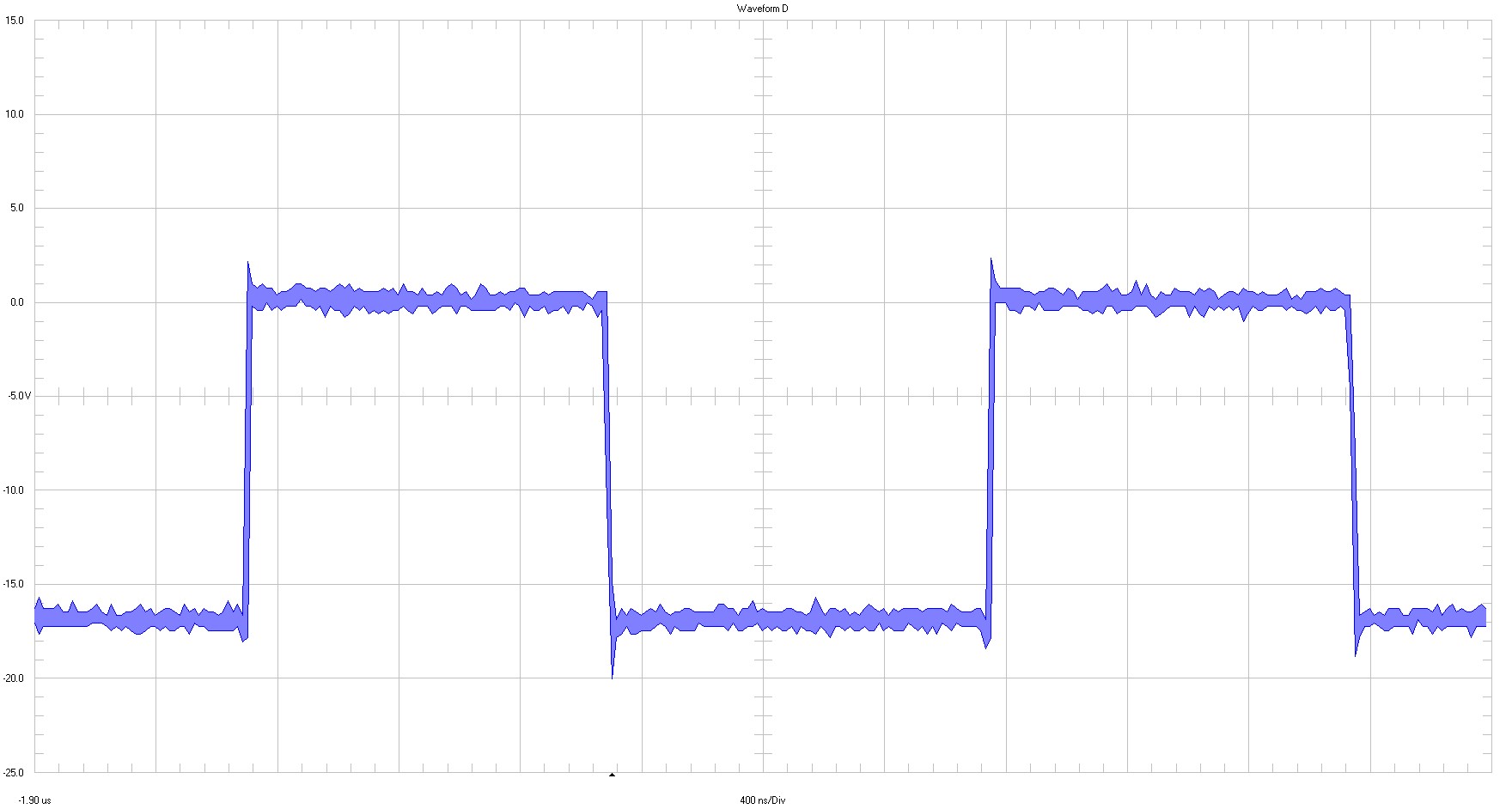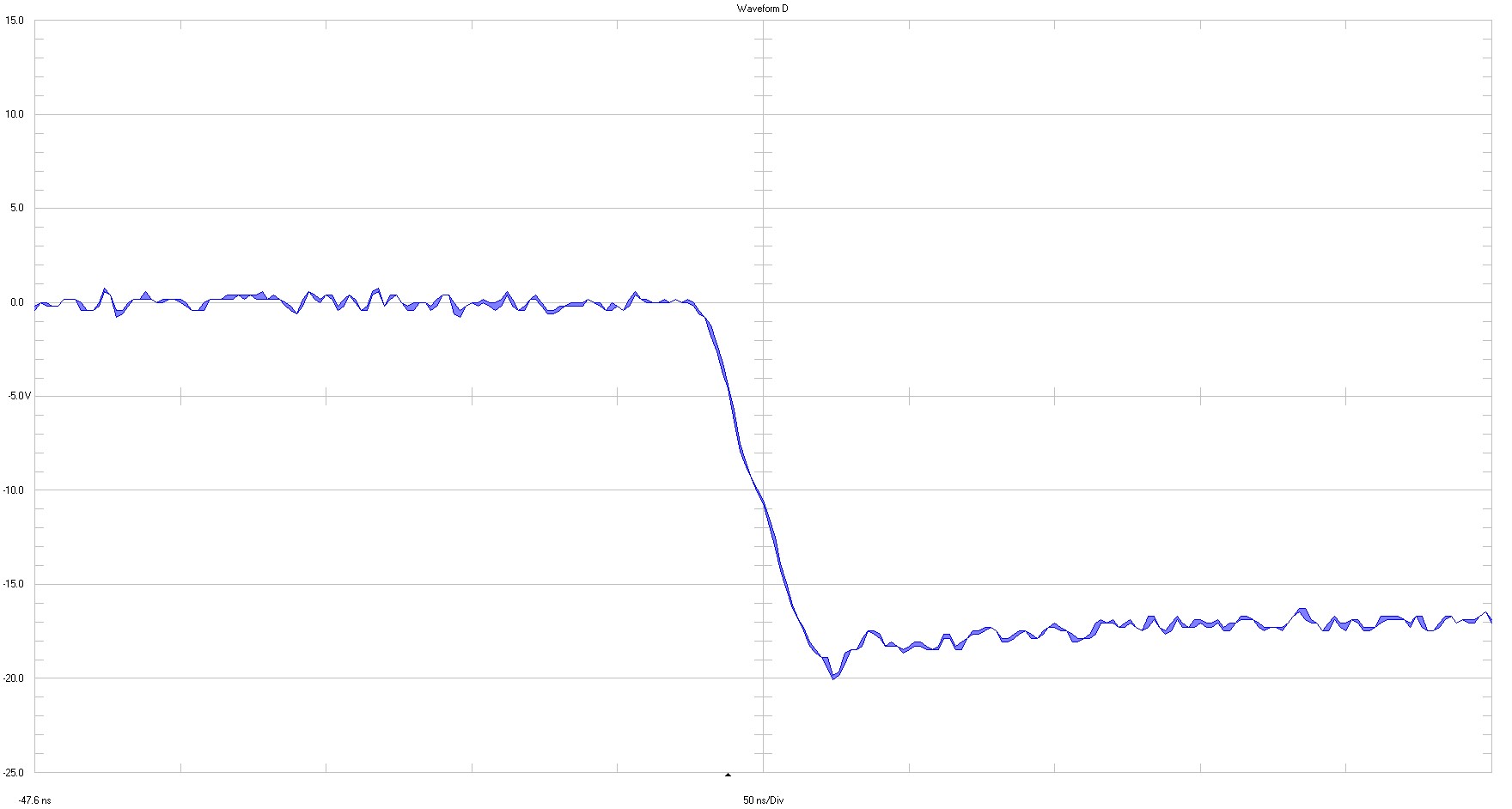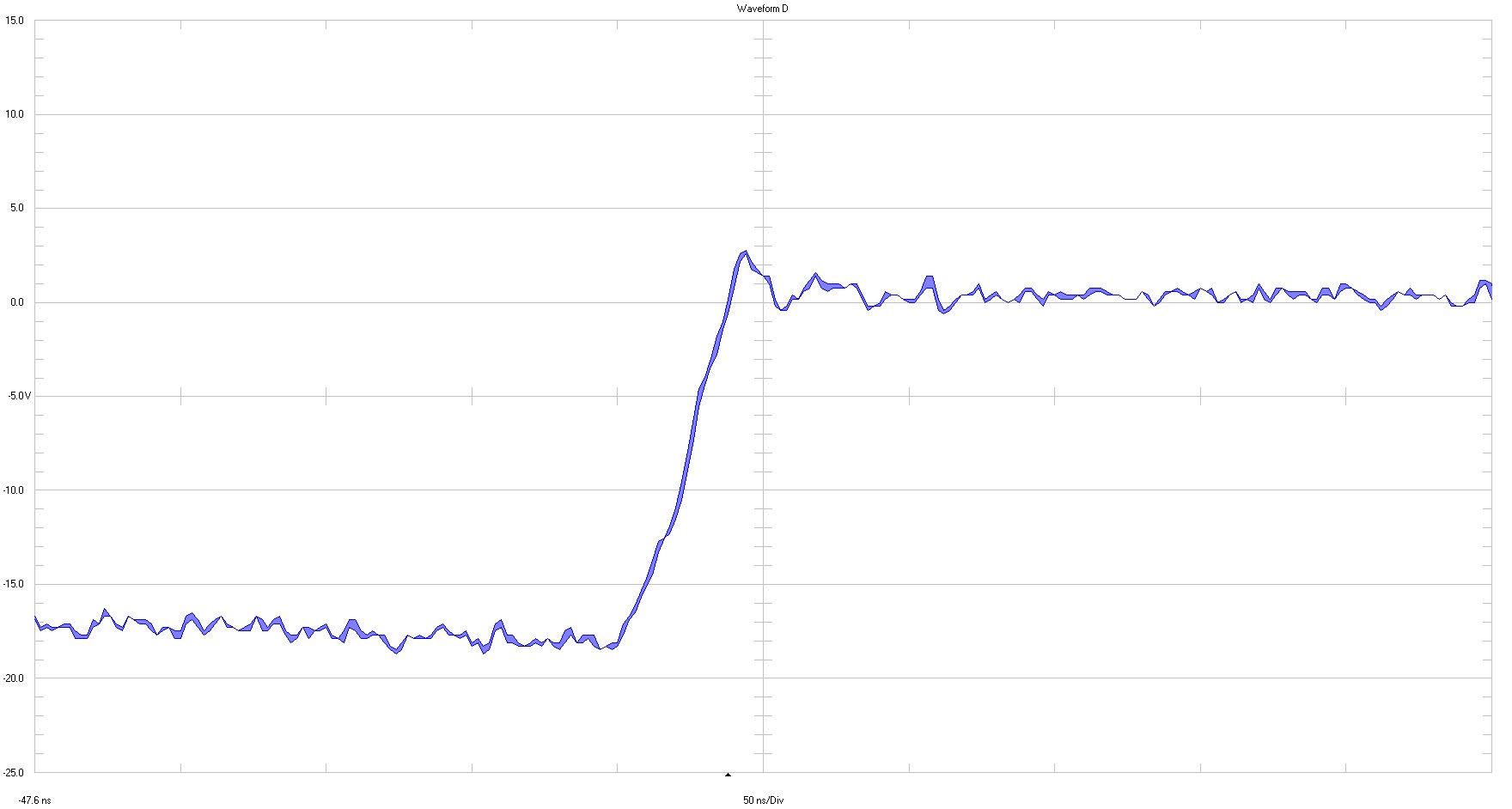TIDT280 May 2022
3.1.2.1.1 9-V Input Voltage

|
5 V / div full bandwidth 400 ns / div |
|

|

|
5 V / div full bandwidth 50 ns / major div |
Figure 3-5 Q1 Source-Drain at 9
VIN